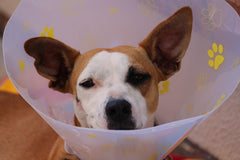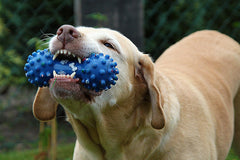
Bringing home a new puppy from a shelter is exciting until you realize just how many things have just become a hazard to them throughout your home and in the yard. Puppy-proofing your house is one of the first things you need to do. Knowing how and when to puppy proof the home is crucial to bringing up a new puppy in a safe environment. Puppies never seem to run out of energy and curiosity, so it is important to always stay one step ahead of them.
Puppy precautions that can be taken throughout the home and yard, before your new buddy arrives at home, include being aware of hazardous plants, choking hazards for puppies, childproofing certain areas, and keeping your tables and counters clear of things you don’t want the puppy getting into.
These precautions only hit the tip of the iceberg when it comes to precautions to take when bringing home a new furry friend.
Identify and Remove All Hazardous Plants

There are a lot of common household and yard plants that some pet owners may not even think twice about, as far as them being toxic to their animals or not. Some of the common household plants that you will want to make sure are well out of reach of the new pup (or any animal) include snake plants, lilies, and oleander. Outside plants that you will also want to use caution with, if they are accessible by your new puppy, include Sago palms, Areca palms, and Weeping fig trees. This doesn’t necessarily mean you need to get rid of these plants in your yard. Just put them in a place where your new puppy cannot get to them.
Be Cautious About Small Objects

New puppies are like toddlers. They love putting things in their mouths, meaning everything is a choking hazard. Items like caps from water bottles, loose change, and various office supplies (paper clips, rubber bands, etc.) are most definitely choking hazards for puppies. Not to mention, if they don’t choke and the items make it into their GI tract, there will be other problems that need to be dealt with.
Lock Away Certain Items with Childproof Latches

On that same idea as keeping choking hazards out of reach, keeping toxic items locked away where a puppy cannot get to them is also important. Cleaning supplies and other harmful chemicals should be securely locked away where the puppy cannot get to them. This means always putting these items away as soon as you are done using them. Puppies are sneaky little things. They will grab an item they shouldn’t have before you even have time to realize they took it.
Keep Things Like Medications and Human Food Out of Reach

The last thing you want your new puppy to get his paws or mouth on is stray medications. Even if they're sealed up in a childproof bottle, those containers are no match for puppy teeth and determination to taste what's inside the bottle. The same goes for people's food. We all know what happens when puppies get a taste of the good stuff. Not only do they become perpetual beggars, but they may also be eating something that they really shouldn't. Some human food is sharable under the right circumstances, but others like chocolate should never be given to a puppy. Here are some human foods that are toxic to dogs.
Conclusion
Bringing home a new puppy is a lot of work, there’s no doubt about that. It’s a task that is easily comparable to bringing home a new baby that will be a toddler in no time flat. If you go into this new adventure knowledgeable and prepared, you are already starting off on the right foot. For you and your new furry friend.
Once you've successfully puppy-proofed your home, you can now start training your puppy.
Here are 5 tips you need to know if you want to house train your new furry buddy.
How to puppy-proof your house?
How to puppy-proof outlets?
How to puppy-proof your yard?
Related Posts:
- Best Puppy Supplies According to Vets
- The Best 7 Tips for Puppy Care
- 5 Puppy Chew Toys You Need to Know




